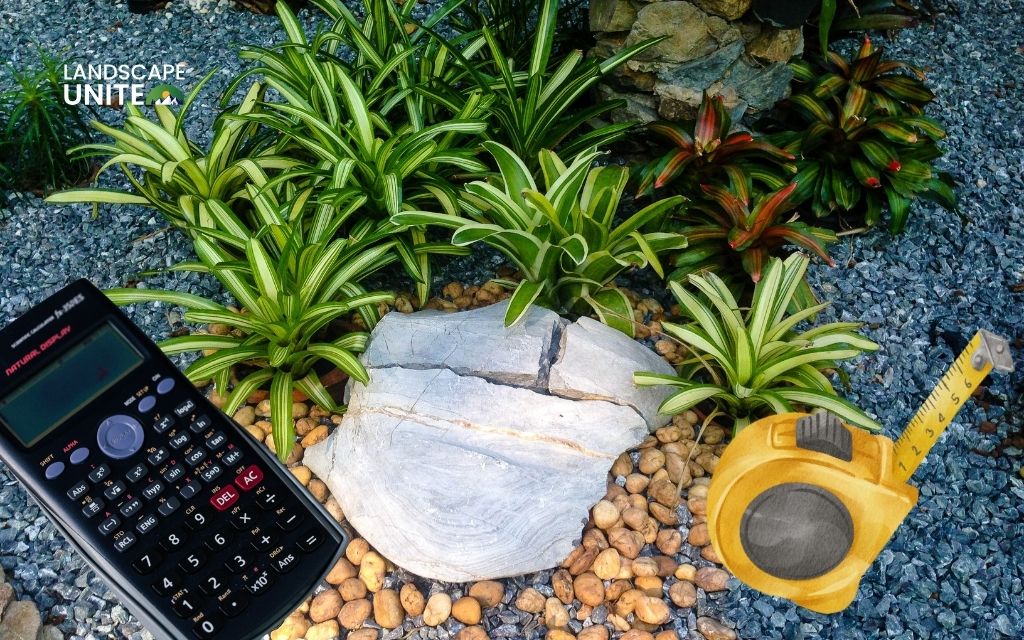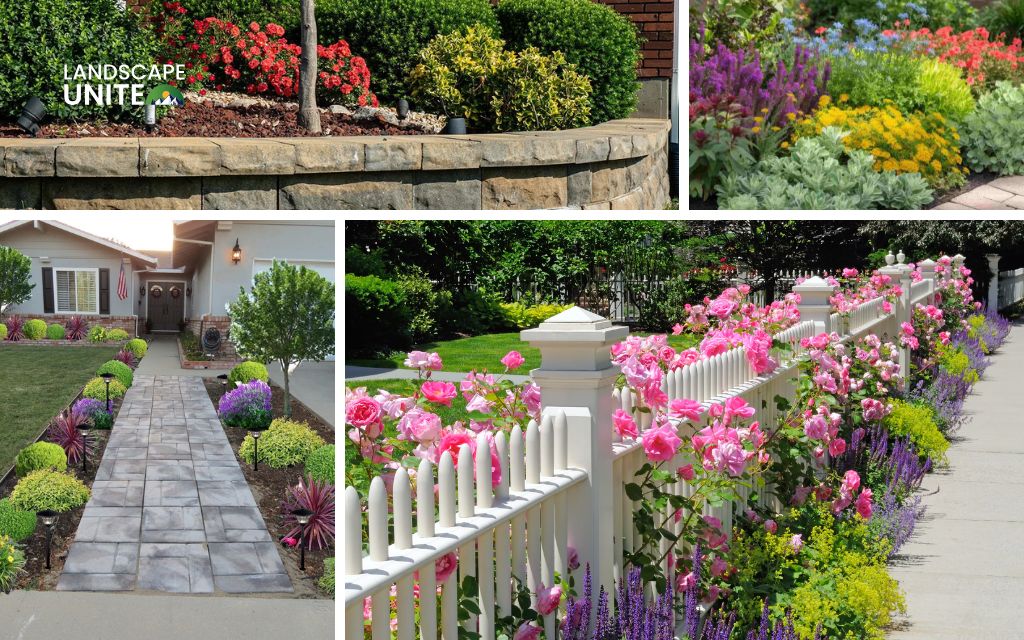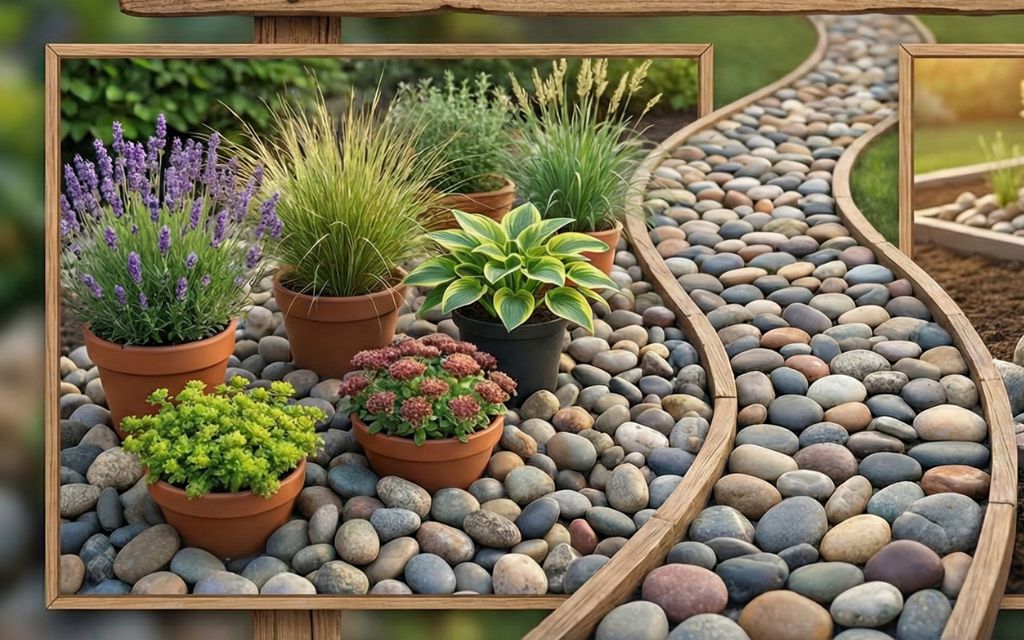Maintaining beautiful flower beds requires more than just planting and watering. Regular trimming is essential for keeping your garden healthy and thriving throughout the seasons.
When you properly trim your flower beds, you’re promoting stronger plant growth, preventing disease, and setting the foundation for long-term garden success.
Throughout this article, you’ll learn professional trimming flower beds techniques, understand the best timing for seasonal maintenance, discover which tools make the job easier, and avoid common mistakes that can harm your plants. By the end, you’ll have the confidence to trim your flower beds like a seasoned gardener.
What does trimming flower beds involve?
Trimming flower beds encompasses much more than simply cutting back a few overgrown plants. It’s a comprehensive maintenance process that combines several tasks to keep your garden beds healthy.
At its core, flower bed trimming includes:
- Trimming shrubs and perennials involves cutting back stems, branches, and foliage to appropriate heights based on each plant’s growth pattern and blooming schedule. This encourages bushier growth and prevents plants from becoming leggy or overcrowded.
- Deadheading spent flowers means removing faded or dying blooms before they go to seed. This task redirects the plant’s energy toward producing new flowers rather than seed production, extending your bloom time significantly.
- Removing overgrowth and encroaching grass keeps your flower beds defined and prevents lawn grass, weeds, or aggressive plants from invading the space intended for your ornamental plants.
- Edging for neat lines creates crisp, clean borders between your flower beds and lawn areas. Sharp edges not only look professional but also serve as a functional barrier against grass runners and weeds.
- Mulch refresh or weed control after trimming completes the process by suppressing future weed growth, retaining soil moisture, and giving your beds a finished, polished appearance.
Each of these elements works together to create a well-maintained flower bed that showcases your plants at their best while supporting their health and longevity.
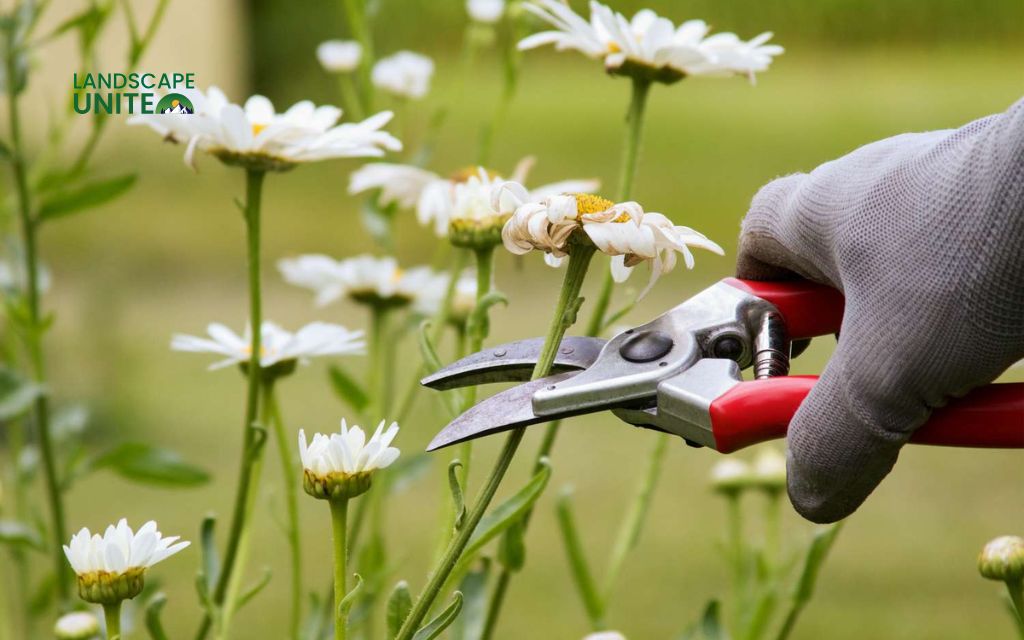
Tools you’ll need
Having the right tools makes trimming flower beds easier and produces better results.
Here’s what you should have in your garden shed:
- Hand pruners are your most essential tool for precise cuts on stems up to three-quarters of an inch thick. Choose bypass pruners rather than anvil-style for cleaner cuts that heal faster.
- Hedge shears or electric trimmers handle larger shrubs and plants that need shaping. Manual hedge shears work well for smaller jobs, while electric or battery-powered trimmers save time on extensive trimming projects.
- Garden gloves protect your hands from thorns, blisters, and plant sap that can cause skin irritation.
- Lawn edger or flat shovel creates and maintains crisp borders around your flower beds. A half-moon edger gives professional results, but a sharp flat spade works effectively for most homeowners.
- Leaf rake or blower efficiently clears clippings, dead foliage, and debris after you’ve completed your trimming work. A lightweight rake works well for smaller beds, while a blower speeds up cleanup in larger gardens.
Keeping your tools clean and sharp ensures they cut cleanly rather than crushing or tearing plant tissue, which can lead to disease and slow healing.
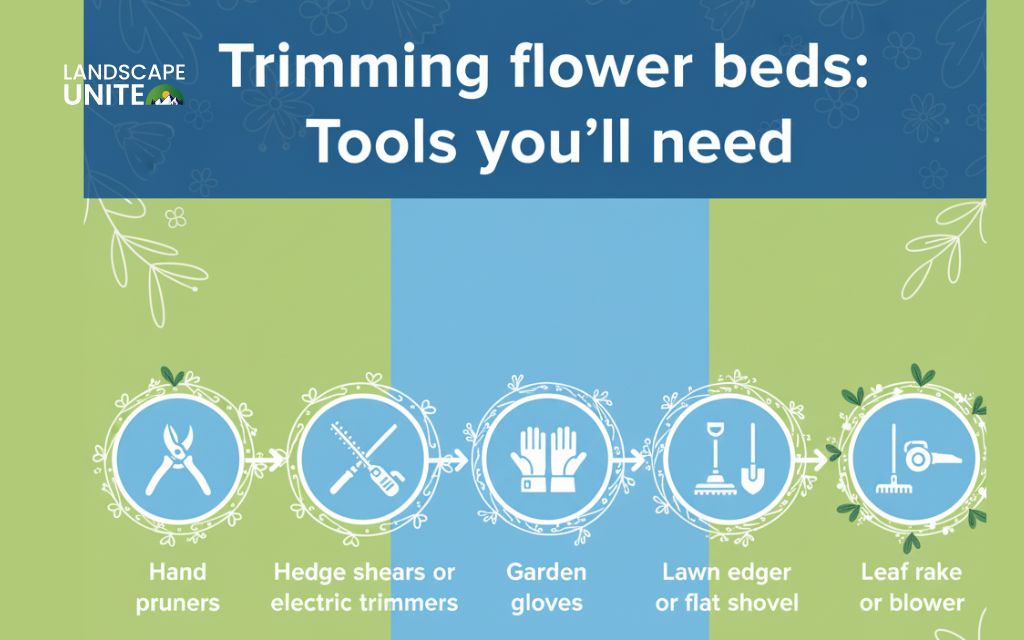
How to trim flower beds: Step-by-step guide
Follow this professional approach to achieve excellent results when trimming your flower beds:
Step 1: Assess and Plan
Begin by walking through your entire flower bed area with a critical eye. Note which plants need attention, identify dead or diseased growth that requires removal, and observe how plants are interacting with each other.
Take time to distinguish between perennials that will return next season, annuals that complete their life cycle in one year, and woody shrubs that require different pruning techniques.
This assessment prevents mistakes and helps you work efficiently.
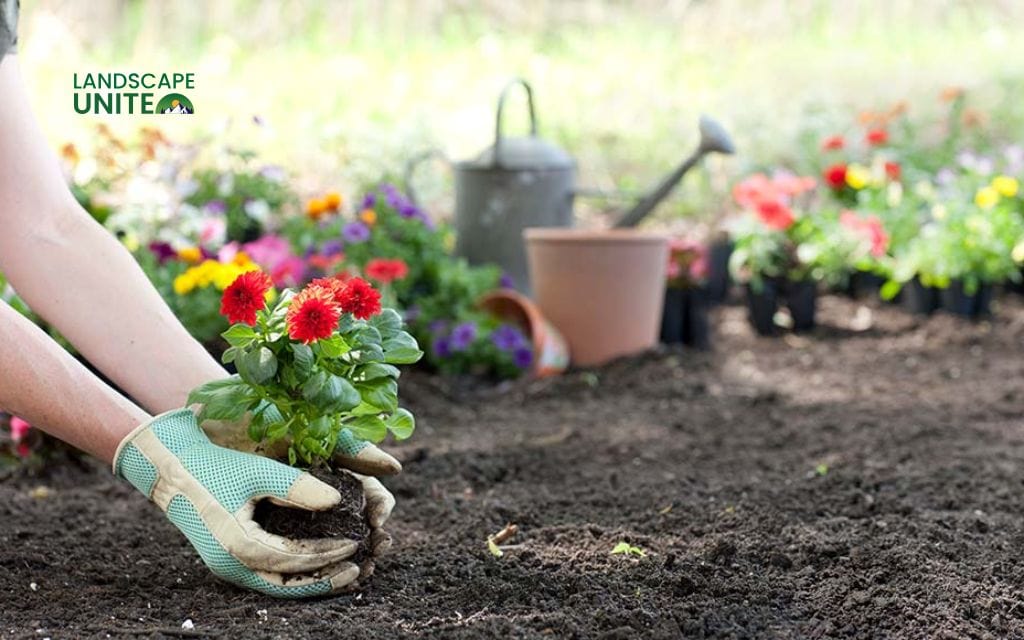
Step 2: Remove spent or dead growth
Start with the most obvious cleanup tasks by cutting back perennials to their recommended heights, which varies by species. Most perennials benefit from being cut back to within a few inches of the ground in fall or early spring.
Deadhead all faded blooms by cutting just above a leaf node or lateral bud. Remove any obviously dead, diseased, or damaged stems completely, cutting back to healthy tissue or the base of the plant.
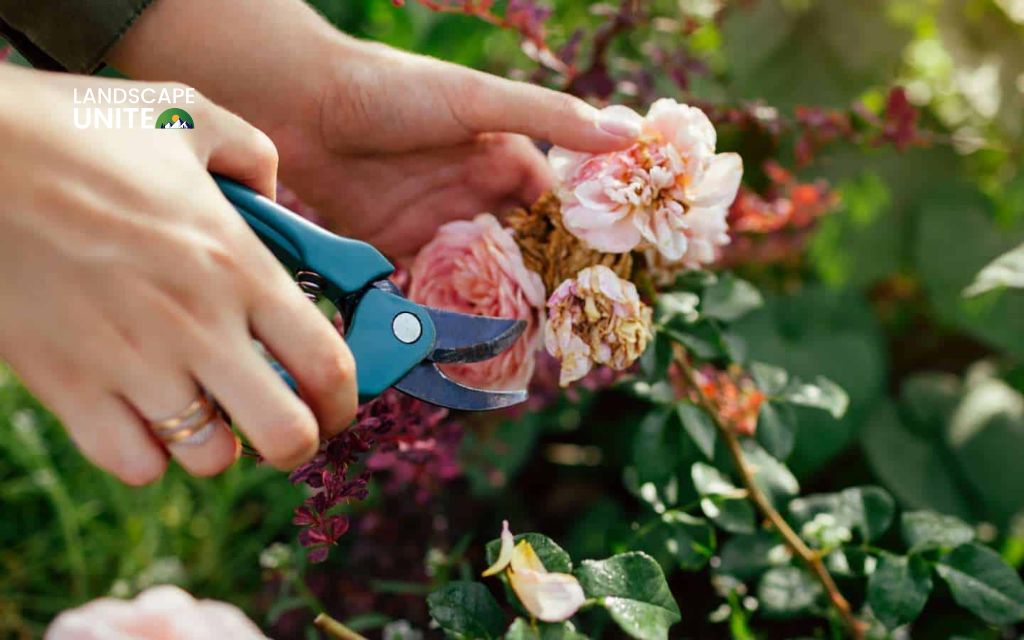
Step 3: Shape and thin bushes or shrubs
Using sharp hedge shears or loppers, shape your shrubs to maintain their natural form while improving their appearance.
Remove crossing branches, thin out dense interior growth to improve airflow, and cut back overly long shoots. Focus on creating symmetry while maintaining the plant’s characteristic growth habit.
Make cuts at a slight angle just above an outward-facing bud to encourage growth in the right direction.
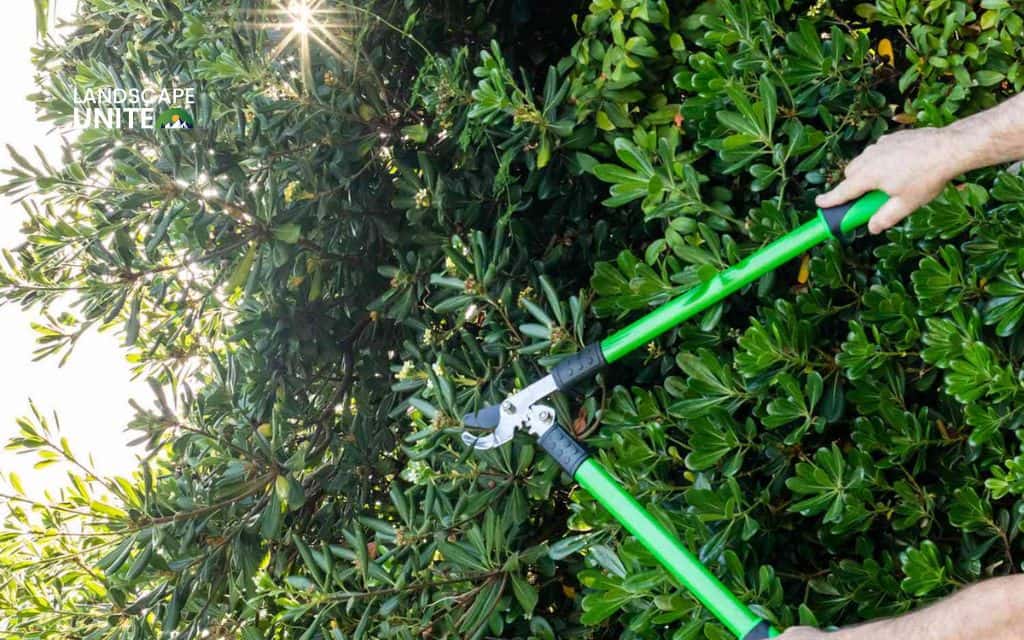
Step 4: Define the edges
Creating clean edges transforms the appearance of your flower beds.
Using a flat spade, half-moon edger, or power edger, define the border between your beds and lawn by digging a trench approximately two to three inches deep. This vertical cut should follow your bed’s natural curve or straight line.
Remove the grass and soil from this edge, creating a small gap that prevents lawn grass from creeping into your beds.
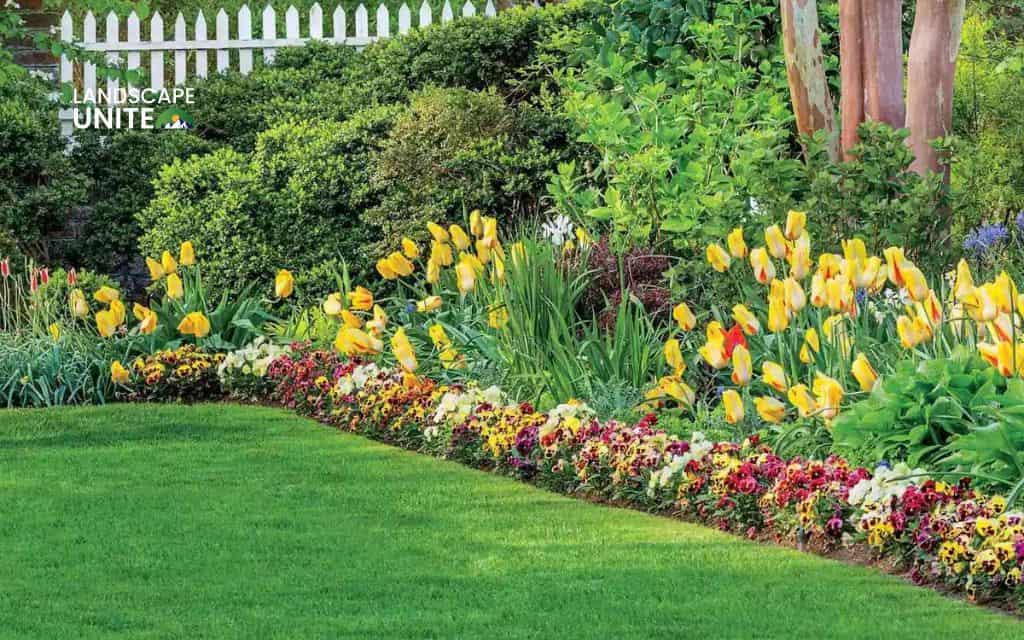
Step 5: Clean and mulch
Rake all clippings, pull weeds, and debris from your flower beds. Dispose of diseased plant material in the trash rather than your compost pile to prevent spreading problems.
Once beds are clean, consider adding a fresh two to three inch layer of mulch around plants, keeping it pulled back slightly from plant stems to prevent rot.
Fresh mulch suppresses weeds, conserves moisture, and gives your beds a professionally maintained appearance.
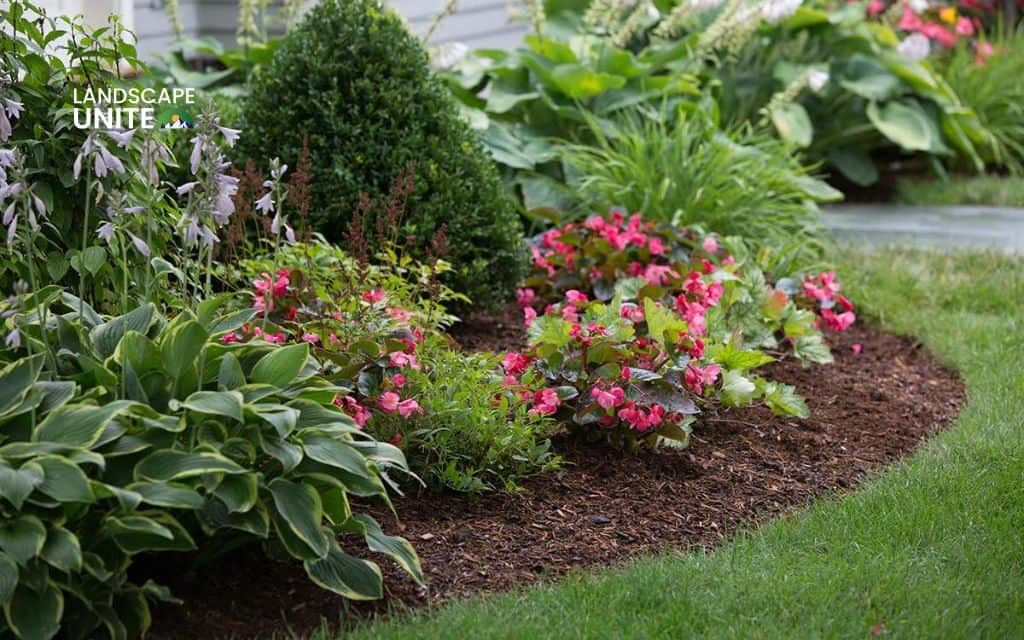
Best time to trim flower beds
Timing your trimming flower beds activities correctly ensures healthy plants and optimal results throughout the year:
Spring
Spring is the primary cleanup season for most flower beds.
As temperatures warm and new growth begins, cut back any dead stems left from winter, remove debris that accumulated during cold months, and reshape shrubs before their active growing season begins.
Spring trimming prepares your beds for the growing season ahead and allows you to assess winter damage.
Summer
Summer calls for lighter, maintenance-focused trimming.
Deadhead flowering plants regularly to encourage continuous blooming, trim back plants that have become overgrown or are encroaching on walkways, and lightly shape fast-growing shrubs as needed.
Summer trimming maintains neatness without stressing plants during hot weather.
Fall
Fall involves preparing beds for winter dormancy.
Cut back perennials after frost has killed their foliage, remove spent annuals entirely, and clean beds of fallen leaves and debris. Some gardeners prefer leaving certain perennials standing for winter interest and wildlife habitat, which is perfectly acceptable.
Fall is also an excellent time for major bed edging projects.
Winter
Winter trimming should be minimal in most climates.
In warm zones where plants remain active, perform light structural cleanup as needed. In cold climates, avoid major pruning during winter months as it can stimulate new growth that may be damaged by subsequent freezes.
Winter is better spent planning next season’s garden rather than actively trimming.
Common mistakes to avoid
Even experienced gardeners sometimes make errors when trimming flower beds. Here are the most frequent mistakes and how to avoid them:
- Over-trimming or pruning at the wrong time damages plants and reduces flowering. Research the specific needs of your plants – spring-blooming shrubs like lilacs and forsythia should be pruned immediately after flowering, while summer bloomers can be trimmed in early spring. Cutting back plants too severely removes the energy reserves they need for recovery.
- Using dull or dirty tools crushes plant tissue instead of making clean cuts, creating entry points for disease and pests. Sharpen your pruners and shears at least once per season, and wipe blades with rubbing alcohol between plants to avoid spreading diseases.
- Ignoring plant-specific needs leads to poor results. Roses, hydrangeas, lavender, and ornamental grasses each have unique pruning requirements. For example, some hydrangea varieties bloom on old wood and should not be cut back in fall, while others bloom on new growth and benefit from spring pruning.
- Skipping mulch after cleanup misses an opportunity to suppress weeds and improve your bed’s appearance. Fresh mulch after trimming gives your beds a finished look and provides practical benefits throughout the growing season.
- Never compost plants affected by fungal diseases, bacterial infections, or pest infestations. Bag this material and dispose of it in household trash to protect your garden’s health.
Conclusion
Mastering the art of trimming flower beds transforms your landscape from simply planted to professionally maintained. The techniques covered in this guide provide everything you need to keep your flower beds beautiful and thriving throughout the year.
Regular flower bed maintenance delivers multiple benefits beyond appearance. Your plants will grow stronger and more vigorously, disease and pest problems decrease when you remove stressed or damaged growth, and the time investment in routine trimming is far less than dealing with severely overgrown beds.
The key to success lies in establishing a consistent routine. Rather than viewing flower bed trimming as an overwhelming annual project, break it into manageable seasonal tasks. A little attention each season prevents major problems and keeps your garden looking its best year-round.
Ready to expand your flower bed expertise? Explore our additional gardening guides on planting design, advanced edging techniques, and mulching strategies to take your landscape to the next level.
Frequently asked questions (FAQs)
How often should I trim my flower beds?
Light trimming and deadheading should occur every 2 – 3 weeks during the growing season. Major trimming sessions typically happen 2-3 times per year: spring cleanup, mid-summer maintenance, and fall preparation. Fast-growing plants may require more frequent attention.
What’s the difference between pruning and trimming?
Pruning is selective removal of specific branches to improve plant structure and health. Trimming is broader, including general cutting back, shaping, edging, deadheading, and overall bed maintenance. Trimming encompasses pruning along with other cleanup activities.
Can I trim flower beds in summer?
Yes. Summer trimming should focus on deadheading spent blooms, removing damaged foliage, and light shaping. Avoid heavy pruning during extreme heat, which stresses plants. Save major cutbacks for cooler spring or fall seasons.
Should I trim my flower beds before or after mulching?
Always trim before mulching. Complete all pruning, edging, and cleanup first, then rake beds clean. This allows mulch to settle properly around plants on a clean surface.
What plants should not be trimmed back in fall?
Avoid trimming spring-blooming shrubs (lilacs, forsythia, azaleas) that set flower buds in late summer. Leave ornamental grasses standing for winter interest. Some perennials like coneflowers provide food for birds. Evergreen perennials need their foliage for winter protection.
What are common flowerbed edging mistakes?
Common mistakes include edges that are too shallow, allowing grass to grow back quickly; irregular lines in formal landscapes; cutting at wrong angles causing collapse; and failing to re-edge annually, letting borders disappear.
Is October too late to prune?
It depends on your location. In northern climates, October is fine for cutting back perennials but avoid heavy pruning of woody shrubs. In southern regions, October is excellent for most trimming. Stop major pruning 6 weeks before your first expected frost.
What are the 3 C’s of pruning?
The 3 C’s are: remove Crossing branches that rub together; eliminate Crowded branches blocking air and light; and cut Competing leaders fighting for dominance. First remove dead, diseased, or damaged growth, then address the 3 C’s for healthy plant structure.
